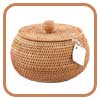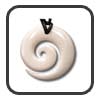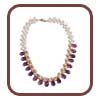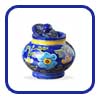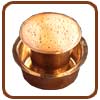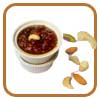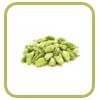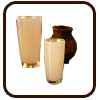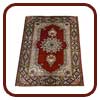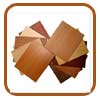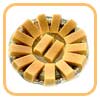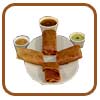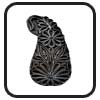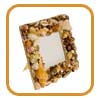 HISTORY OF MARBLE CARVING
HISTORY OF MARBLE CARVING
Marble carving is one of the oldest art form involving the creation of three-dimensional forms from marble. Much before painting started the art of carving shapes from stones started. With this as a beginning, artifacts have evolved to what they are today. The point at which they became art is for the beholder to decide. There are records in history stating that the art of carving statues and sculptures existed from ancient times. They are not only tough and resistant but also display a good sense of style and classic. Carvings of marble enjoy a distinct status in the world of art. Marble carving which is a part of stone sculpting is also dedicated for religious purposes like a number of idols and statues of deities and architecture are crafted from marble.
 MARBLE STONE HOLDS A GREAT EXCELLENCE OF PATTERNS
MARBLE STONE HOLDS A GREAT EXCELLENCE OF PATTERNS
Anything carved out of a marble stone holds a great excellence of patterns and style crafted by best craftsmen depicting a great quality. The art of marble carving was known to Indians and widely prevalent even before the rise of the Mughals in the country. Most of the temples in India especially in the North have lot of carved marble patterns either partially or entirely on walls and ceilings. The frames of doors and windows in the temples used to be carved out of marbles with floral patterns or with other motifs and elaborate designs. Some of the finest marble carvings can be seen carved aesthetically in the Dilwara Jain temples in Mount Abu which is situated in Rajasthan. It is noteworthy that the art work of these temples lay stress on enshrine of many Jain Tirthankaras which talks a lot about the Jain temple architecture.
 JAIN TEMPLES ARE CONSTRUCTED FROM WHITE MARBLE
JAIN TEMPLES ARE CONSTRUCTED FROM WHITE MARBLE
It is believed that the Jain temples in North India are constructed from the white marble situated in the Arasoori hill. The chemical nature of marble is that it a metamorphic rock derived from limestone. The major component of limestone is calcite which is a crystalline form of calcium carbonate. Lime stone is actually a deposition of calcium carbonate in the form of microscopic animal skeletons or similar materials. Lime stone when exposed to heat and pressure and when overlaid by other materials it gets converted into marble. However the marble which is used for carving has either no stains or very few stains.The archives of history show that the art of marble carving reached its zenith during the reign of Mughals in India. A noteworthy change was seen during Shah Jahan's architecture for he used marble in almost most of his construction of monuments which was mainly noted for winning.
 RENOWNED MARBLE BUILDINGS LIKE THE DIWAN-I-KHAS
RENOWNED MARBLE BUILDINGS LIKE THE DIWAN-I-KHAS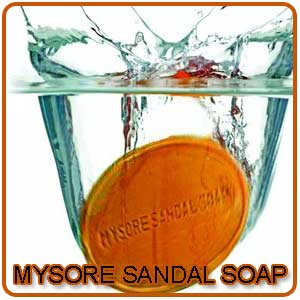
The renowned marble buildings like the Diwan-i-Khas, the Diwan-i-Am and the Moti Masjid slowly showed the transformation of the red sand stone building namely the Red fort. Ajmer houses the famous white marble palace and contemporary to this was the black marble pavilion at the Shalimar Gardens in Srinagar. The marble carving also include the marble inlay work on the architectural monuments like the Red Fort and the Taj Mahal in Agra. The Taj Mahal one of the significant Seven Wonders of the World is entirely carved out of white marble. Etmatuddaula tomb which is of Nur Jahan's father was built by Nur Jahan in white marble between 1622 and 1628. The marble crafting and the sculptures of India display an expressive and noticeable eye-catching and flexible pattern of artistic craftsmanship and designs.Stained marbles are generally not used for sculpting but sometimes the sculptors make the best effort to incorporate these stains into the carving with great skill and proficiency.
 SPECIALTY OF MARBLE
SPECIALTY OF MARBLE
Some of the specialty of marble is that in competence to the human skin, marble has slight surface translucency.This quality of the marble allowing light to pass diffusely gives the marble sculpture a visual depth beyond its surface thereby giving a realistic appearance for figurative art work. The other factor which makes marble carving less tedious is that when the marble is initially quarried it is very soft and so easy to work and for further refinement and polishing. But however as the marble stone gets old it becomes more tough and durable and difficult to work with. Preference to the cheaper and less translucent limestone is based largely on the fineness of marble's grain, which enables the sculptor to render minute detail in a manner not always possible with limestone.
 MARBLES ARE ALSO WEATHER-RESISTANT
MARBLES ARE ALSO WEATHER-RESISTANT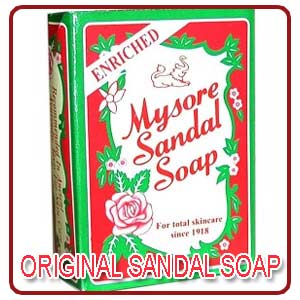
Marbles are also weather-resistant. Marble has the quality of absorbing oil from the skin when we work with and this might lead to yellow brownish staining. Even weak acids are said to act on a marble stone and so does not do really well in outdoor installation. But granite stones can withstand any weather condition but still has the drawback of very difficult to work with and not really suitable for refined works. When compared to other metals like bronze the malleability and the durability of marble is less and hence crafting on the marble requires much pre-planning and consideration. Initially marble carving used to have basic implements for working but however now there are number of power tools which have come up. Some of the common tools which are used in marble carving include mallet, chisels, finger nail, chisel with multiple teeth, pitching tool, pneumatic hammer, an angle grinder, fitted with an electrolysis-applied diamond studded blade and hand drill.
 THE SCULPTORS OF MARBLE IN INDIA
THE SCULPTORS OF MARBLE IN INDIA
Apart from these for further refinement and for contours the sculptors use rasps, files and abrasive rubbing stones and/or sandpaper to smooth the surface contours of the form. To achieve a high-luster polish on marble a very fine abrasive, tin oxide, is used following the use of pumice or finer grits of sandpaper. The present day craftsman are all believed to be the descendants of those who came from Persia to decorate the Taj Mahal who excelled in marble carving and fine art of setting gems and semiprecious stones in marble. Most of these craftsmen or the master artisans chose Agra as their home. Since then this art grew to a great extent and became an integral part of the cultural heritage of India. The descendants use the same process or technique for the marble carving form their ancestors which was involved in the building of Taj Mahal.
 INDUSTRY HAS REGAINED ITS STRENGTH TO PRODUCE EXCELLENT MARBLE
INDUSTRY HAS REGAINED ITS STRENGTH TO PRODUCE EXCELLENT MARBLE
The fall of the Mughals also paved for the decline of the art of the marble work which also led to the diminish of the craftsmen. But however the industry has regained its strength to produce excellent marble inlaid work of late. Latest water jet cutting technology is used to get intricate and detailed work. But however now technology has improved to a great extent even in this field for there are experts who can produce a sculpture with CAD or printed drawings. In the process of sculpting a marble first involves the selection of the stone for carving. The artist follows two ways either they directly carve out on the stone or some may even make a model of the one which has to be carved with either clay or wax and then proceed further by copying it on the stone. Copying is again not an easy way for they have to with calipers or pointing machine. Thus the artists who work with the marble stones are noted for tapping the human form inside the block.
The marble carver knocks off or pitches off the unwanted portion of the stone with the help of a pointed chisel which is usually a long hefty piece of steel with a point at one end and a broad striking surface at the other. Sometimes a chisel which is wedge shaped with a broad and flat edge is used for pitching. Apart from the chisel, mallet which is more commonly known as hammer with a broad, barrel shaped head is very essential in the process of carving. The carver places the point of the chisel or the edge of the pitching tool against a selected part of the stone, and then swings the mallet at it with a controlled stroke. When the hammer strikes the chisel, energy is transferred through the tools which help in the shattering of the stone. Care should be taken at all stages to strike the end of the tool promptly and correctly for even a minute blunder can damage the marble stone. The next step is the roughing out where the sculptors turn the tool with each blow where the stone is removed. Once the outline of the statue is achieved then the refinement process starts with the help of other refinery tools for further defining the statue. The texture is added to the figure with a toothed chisel thereby creating parallel lines in the stone. These lines are obtained because the toothed chisel has number of excavating surfaces on it.
- With the help of a shallower stroke the sculptor define lines by using calipers to measure an area of stone to be addressed, and marking the removal area with a marker. By now the stone would have got the transformation into a general shape of the finished statue. Rasp is an enhancement tool with a coarse surface and this is used to remove excess stone as small chips or dust. A slightly varying tool from the rasp is the riffler which is used to create minute details like the folds of cloth and locks of hair. The final step in the marble carving process is polishing which is done with either a sand cloth or a sand paper. A harder stone form known as emery is used to wrench in the final process of finishing which actually brings out the color of the stone, reveals patterns in the surface and adds a gleam to the sculpture. Along with this tin and iron oxide is also used to give the marble sculpture a highly reflective exterior.
 DEALERS OF ORIGINAL MARBLE CARVING
DEALERS OF ORIGINAL MARBLE CARVING
| 1. Mishra Art Palace,
2488, Khajane Walon Ka Rasta, Chandpole Bazar, Chandpole Bazar
Khajane Walon Ka Rasta, Jalupura, Jaipur, Rajasthan. Ph:
0141 232 7437
|
| 2. Natha arts,
C-22 Nawab Kallan Ka Bagh , Opposite B- 10, M I A quarters , M I Road
Jalupura, Jaipur, Rajasthan. Ph:
0141 237 6770
|
| 3. STONE LINE - Natural Stone Suppliers India,
Yudhishthir Marg, Ashok Nagar
Jaipur, Rajasthan. Ph:
094 13 333330
|
| 4. Shree Siddhivinayak Marble Art,
H. No. 2449, Khajano Walo Ka Rasta, 4th Crossing, Opposite, Bihariji Ka Mandir
Jayanti Market, New Colony, Jaipur, Rajasthan. Ph:
099 50 749053
|
| 5. Prabhat Exports,
1740, Zile Daron Ka Chowk ,Khazane Walon Ka Rasta, Indira Bazar
Indira Bazar Rd, Topkhana Desh, Jaipur, Rajasthan
. Ph: 0141 231 3940
|
| 6. Sikandra Stonecraft, 192, Taru Chaya Nagar, Tonk Road, Sanganer
Hardev Colony, Jagatpura, Jaipur, Rajasthan
. Ph: 094 14 216448
|
| 7. Maruti Sandal Arts,
No. 840, Rasta Bagru Walon Ka, Near Ist Cross, Chandpole Bazar, Jaipur, Rajasthan - 302 001, India
Jaipur, Rajasthan. Ph:
094 14 050517
|
 HISTORY OF MARBLE CARVING
HISTORY OF MARBLE CARVING MARBLE STONE HOLDS A GREAT EXCELLENCE OF PATTERNS
MARBLE STONE HOLDS A GREAT EXCELLENCE OF PATTERNS JAIN TEMPLES ARE CONSTRUCTED FROM WHITE MARBLE
JAIN TEMPLES ARE CONSTRUCTED FROM WHITE MARBLE RENOWNED MARBLE BUILDINGS LIKE THE DIWAN-I-KHAS
RENOWNED MARBLE BUILDINGS LIKE THE DIWAN-I-KHAS
 SPECIALTY OF MARBLE
SPECIALTY OF MARBLE MARBLES ARE ALSO WEATHER-RESISTANT
MARBLES ARE ALSO WEATHER-RESISTANT
 THE SCULPTORS OF MARBLE IN INDIA
THE SCULPTORS OF MARBLE IN INDIA INDUSTRY HAS REGAINED ITS STRENGTH TO PRODUCE EXCELLENT MARBLE
INDUSTRY HAS REGAINED ITS STRENGTH TO PRODUCE EXCELLENT MARBLE DEALERS OF ORIGINAL MARBLE CARVING
DEALERS OF ORIGINAL MARBLE CARVING



